How to Plant Incense: The Guide You Need + [Images and Step by Step]
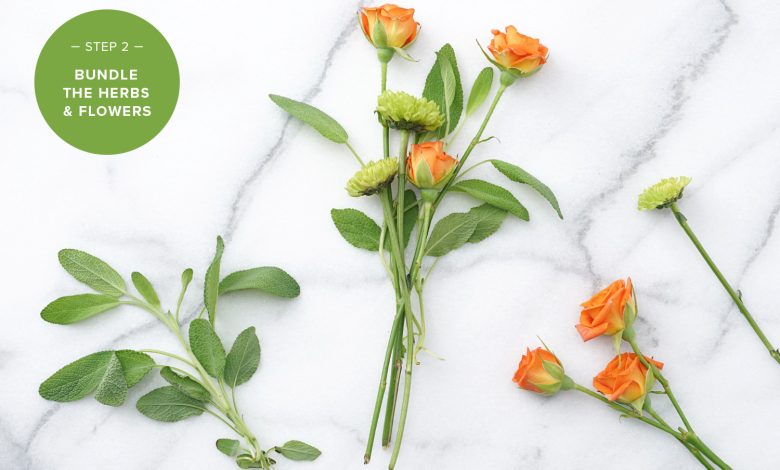
if you’re inlooking for a simple cropand of little demand, incense is one of the best alternatives.
With its attractive foliage, this plant cascades down, like a hanging fountain. And although it is considered an indoor plant, it can be easily grown in your garden or garden. Of course, it requires some care, but these are minimal.
In this article we tell youhow to grow frankincense in the simplest way.
Important Points when Sowing Incense:
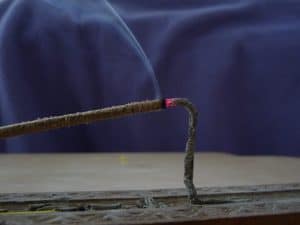 When? Preferably during the spring.
When? Preferably during the spring.- Where? partial shade. It does not tolerate many hours of sunlight well. Maximum between 4-6 hours of light.
- How do we prepare the land? High compost content, good drainage. It is not very demanding regarding acidity.
- How do we water? It requires constant humidity. Does not like puddles. Ideal drip irrigation.
- How do we sow? The most efficient way is by cuttings. Here step by step.
- Plagues and diseases? Mealybugs, mildew, snails and slugs.
What do we need to plant incense?
When should it be sown?
Frankincense is best grown by cuttings. Plant preferably during the spring.
Where?
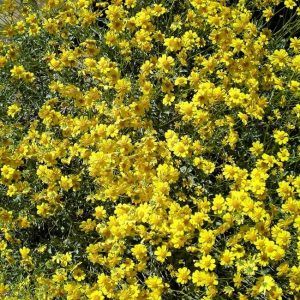 must be exposed to amoderate amount of light,preferably indirect, to prevent it from drying out easily. This, particularly, during the summer, when the sun is quite intense.
must be exposed to amoderate amount of light,preferably indirect, to prevent it from drying out easily. This, particularly, during the summer, when the sun is quite intense.
It is recommended that they receive between 4 and 6 hours of light a day and a little shade in the late afternoon. They also fit very well indoors.
They are not tolerant to low temperatures.
The ideal temperature is between 15 and 21ºC constant. Below 10ºC the development of the plant stops.
How often should it be watered?
incenseis sensitive to lack of water,especially during spring and summer. For the same reason, on those dates, irrigation must be constant. During cold periods irrigation can be reduced.
Consider applying 2 to 3 cm of mulch during the hottest seasons to conserve moisture and prevent soil erosion.
 The soil must always remain moist in the deep layers.
The soil must always remain moist in the deep layers.
Waterlogging should be avoided, as it can kill the plant. For this reason, the drip irrigation system is recommended.
How do we prepare the land?
It is not demanding on soil or acidity. It easily adapts to different types of substrate, as long as they have agood drainage and a high compost content.
It adapts very well as a hanging plant, so you may want to plant it in a pot to hang it in your garden. For this, you can use a universal growing medium mixed with 30% perlite, and put a layer of clay so that the water drains faster.
How to sow frankincense step by step
Get frankincense cuttings to plant
Cut a stick of frankincense about 1 cm and place it in a glass of water. Within a few days, roots will begin to grow. When these reach an acceptable length, you can plant it in your pot or garden.

Clear the ground
It extracts weeds and remains of previous crops and all kinds of residues to ensure that your incense receives the correct amount of nutrients.
prepare the ground
Moisten the soil before planting.
Spread peat moss and worm castings on the ground, or mix in a 5cm layer of manure to fertilize the soil.
Put the seedlings in the ground
 It is easiest to grow frankincense from seedlings or cuttings. You can plant them in the garden directly or in a pot, if you prefer.
It is easiest to grow frankincense from seedlings or cuttings. You can plant them in the garden directly or in a pot, if you prefer.
At planting time the soil should be fully prepared and moist but not waterlogged.
If you plant cuttings, bury them 5 cm deep, ensuring that the soil is flush. If you plant seedlings, be sure to cover the roots to where the stem begins.
Outdoors , try to keep a separation distance of between 1 5 and 30 centimeters between each plant.
water often
Make sure that the soil is always moist, but without producing puddles.
fertilize the land
Add compost once, during the spring and summer.
If you use fertilizers, dilute in the irrigation water every two weeks.
If you prefer, you can also feed your plant with worm humus, manure and worm to ensure that it has the necessary nutrients.
Prune your plants regularly
 If you notice that your plant grows too much, prune it during the spring, removing the old branches and cutting off the young ones.
If you notice that your plant grows too much, prune it during the spring, removing the old branches and cutting off the young ones.
Pruning will help shape the plant as well as contain its size and remove dead branches.
A good pruning is done by blunting the apical portion of the young branches, which tend to disperse; In this way, the plant is compacted a little, which is very useful, since it grows quickly.
Protect your plant and give it good maintenance.
Check your plants regularly; this to prevent them from contracting pests and other diseases. If you like, you can apply a fungicide spray to counteract mold.
You can also put up a chain link mesh to protect the plants while they are growing.
Frankincense pests and diseases
Some of the most common pests and diseases that affect frankincense are:
snails and slugs
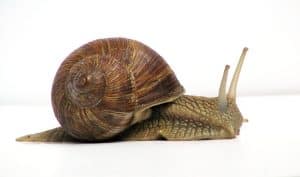 They live in humid areas and water areas.
They live in humid areas and water areas.
They feed on all kinds of plants and can destroy an entire garden. In addition, many snails harbor parasites that affect animals and humans, and are capable of producing dangerous diseases such as meningitis.
We can prevent the arrival of snails by planting our plants in high places and growing all kinds of aromatic herbs nearby.
Aerate the soil frequently to remove eggs that remain buried in the ground. Establish a strict control in the irrigation and humidity of our crops. Implement adrip irrigation system.
We can also make barriers out of sawdust, ashes or egg shells. Some of the natural predators of snails and slugs are birds, turtles, and beetles.
You can easily collect them manually. To deceive them and prevent them from reaching your crops, you can place a cloth soaked in milk or beer at night and put it around the plants.
Mealybugs
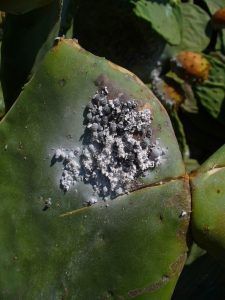 Mealybugs feed on the leaves and stems of plants. In addition, they produce a honeydew that attracts destructive fungi.
Mealybugs feed on the leaves and stems of plants. In addition, they produce a honeydew that attracts destructive fungi.
They are one of the most difficult pests to control, since their body is covered with white waxy excrescences, chemical treatments are not very successful. For the same reason, for its control, it is convenient to locate this plague in its first stages, since as they lack a shield, they are easier to fight.
If the incidence is severe, neem oil sprays or potassium soap should be sprayed.
For the biological control of this pest, natural predators such as Rodolia cardinalis or Cryptolaemus montrouzieri are used. The release is done 15 days after any treatment, periodically, in spring or early summer.
Mildew (Phytophthora infestans)
The dispersion of the fungus is carried out by rain and wind, sprinkler irrigation, dew and condensation drops. Favorable conditions for its development are relative humidity above 90% and temperatures between 10 and 25ºC.
For its prevention, it is recommended to remove the plants that have already been affected by the disease and to make an adequate management of ventilation and irrigation. It is also recommended to use healthy seedlings.

![Photo of Blue Flowers: [10 Examples, Care, Characteristics]](https://www.complete-gardening.com/wp-content/uploads/2022/08/blue-flowers-10-examples-care-characteristics-390x220.jpg)
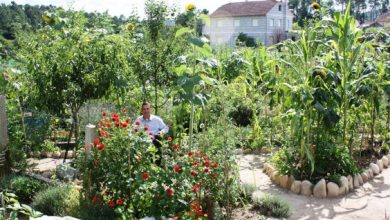
![Photo of Diseases and Pests of Peach Tree [Identify and Treat Them]](https://www.complete-gardening.com/wp-content/uploads/2022/08/diseases-and-pests-of-peach-tree-identify-and-treat-them-390x220.jpg)